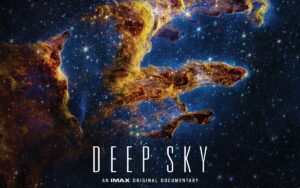If you dropped your business into a place that fulfilled your technology, research, product development, piloting programs, sales, and prospective employee talent pools — both seasoned experts and young workers — what would you think of your luck? More than likely, you’d feel like you hit the lottery.
This dream scenario amounts to the day-to-day operations of FUJIFLM Medical Systems U.S.A., Inc., one of the cornerstone operations in the North Carolina Research Triangle Park. Vice President of Medical Informatics Jim Morgan found himself pausing for breath when he recited the list of advantages and opportunities the Research Triangle has provided Fujifilm over the years.
In this exclusive interview with Innovation & Tech Today, Morgan talked about the evolution of medical informatics. He also discussed central presence in our lives (whether or not we know the term itself), and about where it all happens — smack in the middle of the Tar Heel State.
Innovation & Tech Today: Could you give us a primer on exactly what medical informatics is and what it directly applies to in our lives?
Jim Morgan: Medical informatics is the evolution of the combination of textual information, radiology information systems, hospital information systems, and imaging. You’re now combining that textual information with imaging information, and imaging has expanded throughout the field — radiology, oncology, cardiology, and now 3D imaging systems. Medical informatics was meant to cover both the information and imaging domains. For Fujifilm, medical informatics is radiology, cardiology, 3D imaging, and the medical archive space.
I&T Today: Just in the past few years, a great deal has changed in the relationship between digital technology and the medical field. How specifically has that impacted the areas in which Fujifilm practices medical informatics?
JM: I think in the last four years specifically, the Affordable Care Act has driven the implementation of electronic medical records (EMR) across all institutions in the U.S. That driver of the EMR, which was effectively a consolidation of all textual-based information in a hospital, has further driven the consolidation of the imaging component. Now, you not only want to look at a radiology or pathology report, but you also want to look at the imaging, or the lab report. It has resulted in tighter communication between all the systems and clinical users.
I&T Today: What is Fujifilm doing to drive that process and also make it easier for these systems to better interact — and for patients and doctors alike to enjoy the healthcare benefits, and, hopefully, the lower costs that would follow?
JM: To get better outcomes and be more efficient at a time when reimbursement levels are being driven down by overall healthcare cost containment efforts, companies like ours have had to expand the number of products we offer. If you went back to 1999, when we first offered our Picture Archive Communications System (PACS), to today, where we’ve added Radiology Information System (RIS), Cardiovascular Information Systems (CVIS) and 3D visualization systems, to just this past May, when we acquired a Vendor Neutral Archive (VNA) company we’d partnered with for a couple of years, you can get an idea. The key piece for us is to continue to provide high-technology systems that allow our end users to deliver high-quality patient care at the greatest level of efficiency. This is a very good outcome.
I&T Today: Fujifilm is a major presence in the North Carolina Research Triangle. In fact, it’s an integral part of the medical side. How has the medical research community grown in the triangle in recent years? And how is it advancing your work as a company and the quality of healthcare in general?
JM: Not only is there a significant number of medical companies, which offers us a resource pool of experienced individuals, but you also have leading academic institutions like Duke, the University of North Carolina, and North Carolina State. It turns out Duke and UNC are current customers of our Fujifilm medical products, so we have relationships that benefit both our current and future product versions.
To have a major development center with access to an experienced, talented workforce, access to the new graduates and professional medical staffs from those very highly thought of academic institutions, and having products already installed in those institutions, it gives us the best of all worlds. We cannot only tap into the talent pool, but also the knowledge of the physicians to help guide our development of the products. And it’s all within a few miles. The research triangle is very efficient and convenient for us.
— Lee Bell










